Today, readers get a “twofer”: a Forster’s Tern with prey and a rare Common Black-hawk.
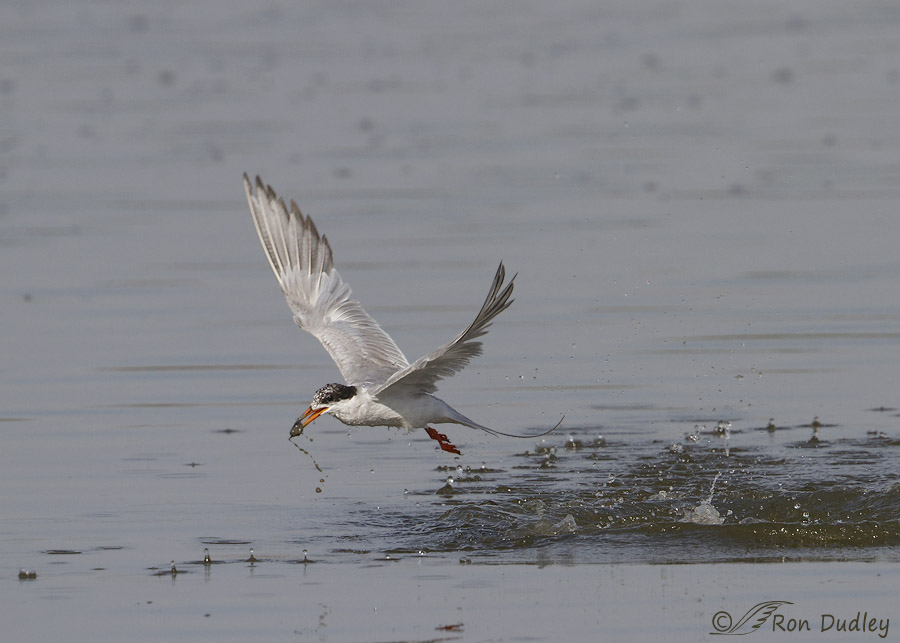
1/3200, f/7.1, ISO 500, Canon 7D, Canon EF500mm f/4L IS II USM +1.4 tc, not baited, set up or called in
I photographed this Forster’s Tern in early August as it was hunting at Glover’s Pond in Farmington. Here the bird is just emerging with prey after one of their patented and explosive dives into the water. I’ve cropped the image in a nontraditional manner to include part of the depression in the water from the dive. These birds eat small fish almost exclusively but they also consume some arthropods and this prey item was so covered with mud that initially I couldn’t tell what it was.
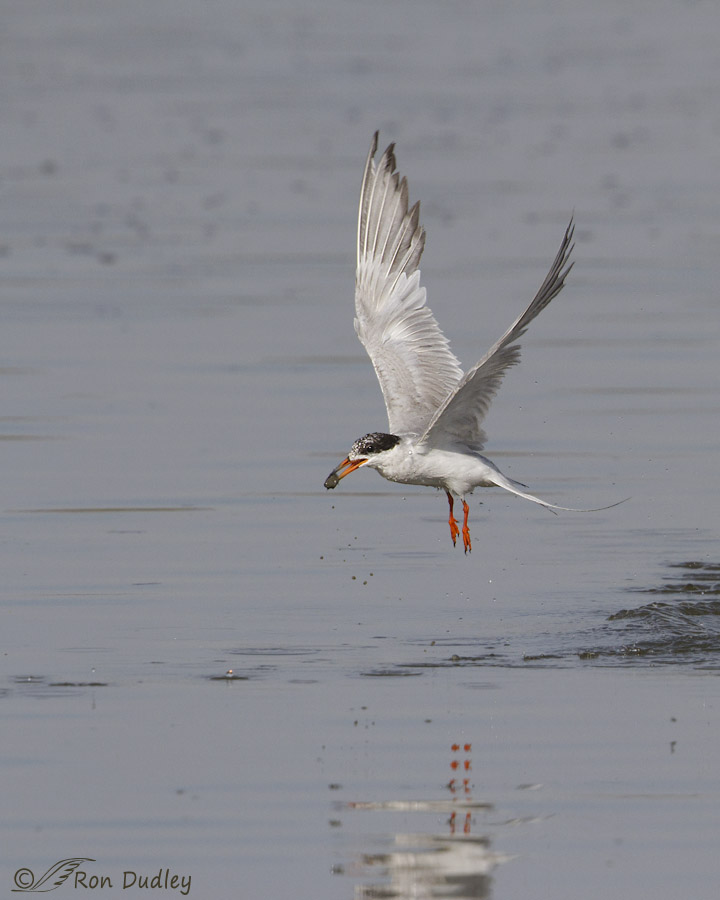
1/3200, f/7.1, ISO 500, Canon 7D, Canon EF500mm f/4L IS II USM +1.4 tc, not baited, set up or called in
And the next frame doesn’t clear up the mystery either.
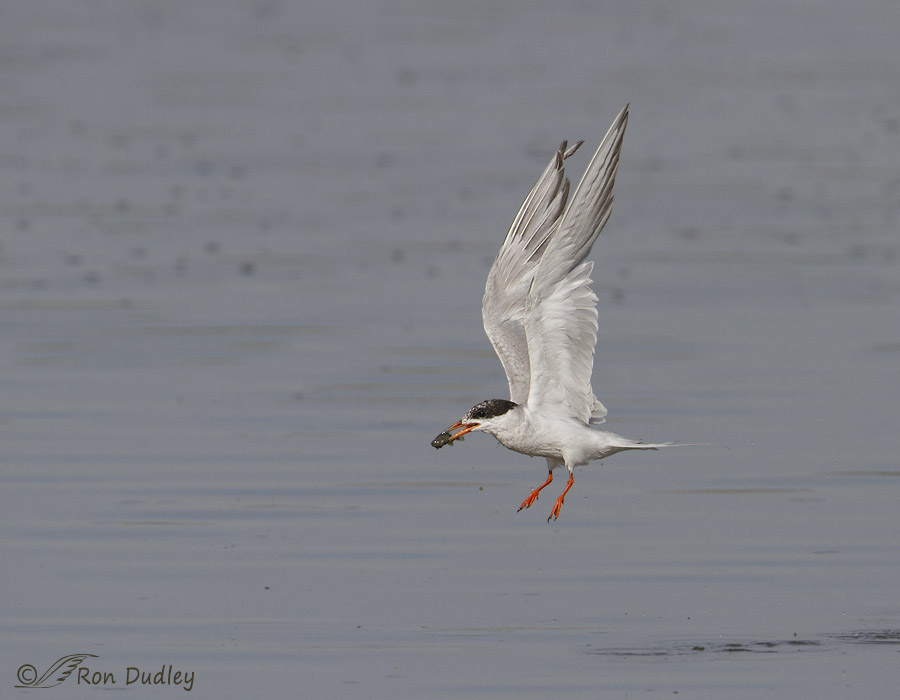
1/3200, f/7.1, ISO 500, Canon 7D, Canon EF500mm f/4L IS II USM +1.4 tc, not baited, set up or called in
But when the angle of the prey was turned slightly the anal fins, pectoral fins and the tail of a small fish came into view. Though this bird wasn’t particularly close to me when it emerged I was happy to catch it with prey and get several images where the bird was sharp.
Ok, now for a change of pace. I seldom post crappy images of birds just because they’re rare or unusual but I decided to make an exception this morning. Two days ago Dennis Coleman reported an unusual hawk near the Bountiful, Utah landfill (near Farmington Bay WMA) and once Jerry Liquori ID’d the bird as a juvenile Common Black-Hawk it created quite the stir in the birding community. Common Black-Hawks are rare even in their normal range (it’s estimated that there are fewer than 300 breeding pairs in the US) but a sighting here in northern Utah is a real attention-getter. Yesterday morning just prior to sunrise as we were pulling into Farmington Bay WMA a Ubird email came in from Jeff Cooper saying that he’d already found the bird in the same general area as the day before so we abruptly changed plans and headed that way.
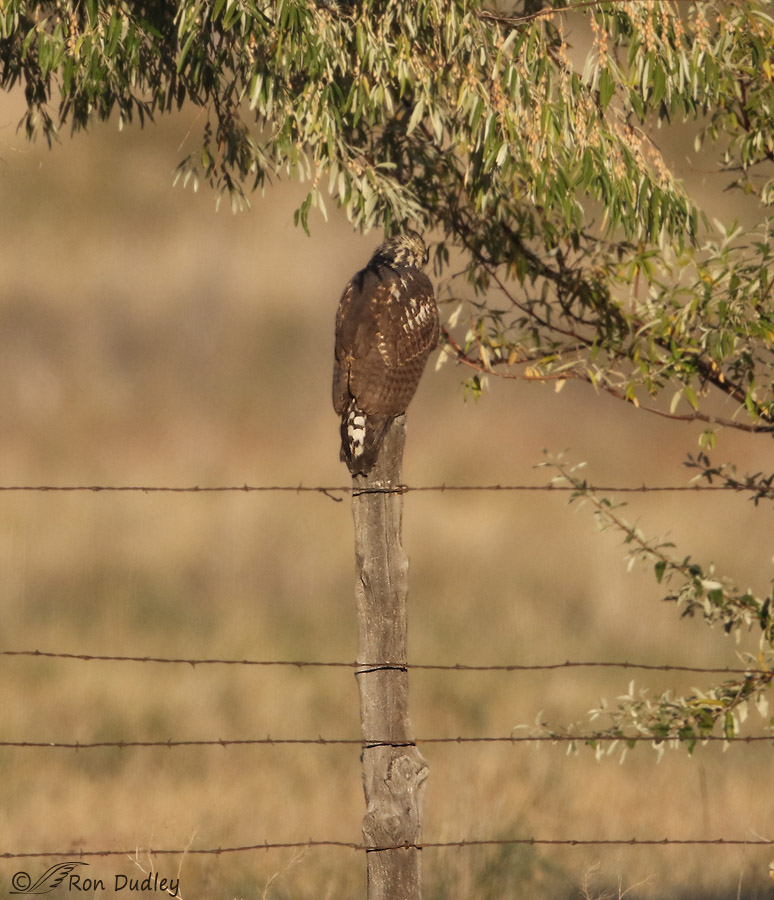
1/3200, f/5.6, ISO 640, Canon 7D Mark ll, Canon EF500mm f/4L IS II USM +1.4 tc, not baited, set up or called in
The bird was tucked away under some olive trees on a fencepost with its back to me but that distinctive tail could occasionally be seen clearly. Adult birds have an unmistakable white median tail band but juveniles like this one have multiple contrasting dark and light tail bands. The hawk was much too distant for quality images (this is a large crop) and I was photographing with my lens pushed against the face of a chain link fence (shooting through the fence) so image quality was understandably lacking.
Based on other images this bird did not appear to be banded.
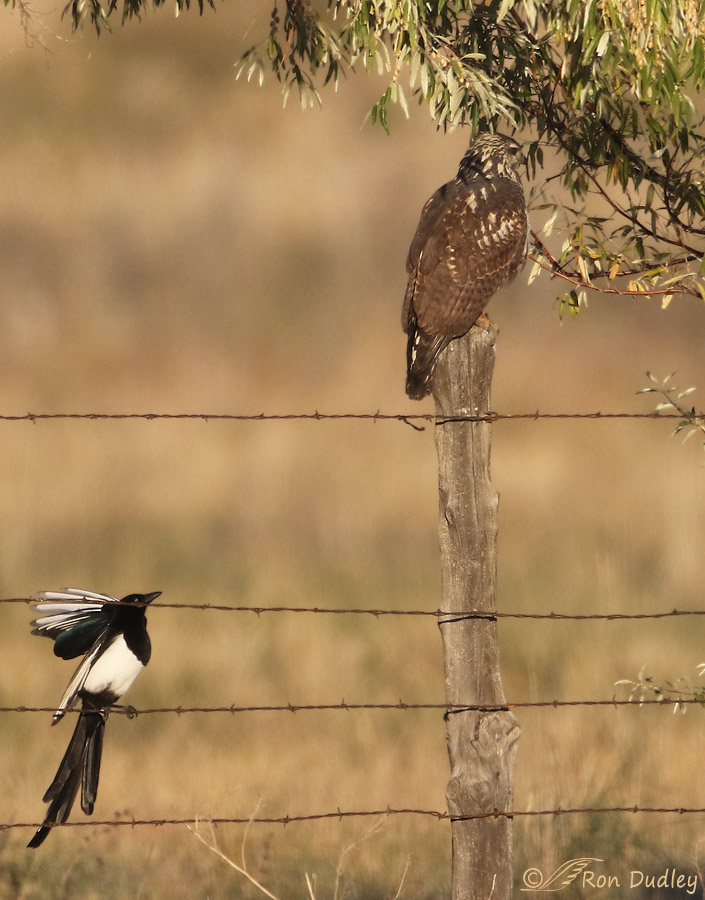
1/2500, f/5.6, ISO 640, Canon 7D Mark ll, Canon EF500mm f/4L IS II USM +1.4 tc, not baited, set up or called in
This image is a little sharper and as you can see this Black-billed Magpie wasn’t very welcoming to our out-of-town guest but the Black-Hawk simply ignored the bad manners.
I had hoped to see one of these hawks on my recent trip to the Mojave Desert but came up empty. What a pleasant surprise to have one of them make the trip to come up and see us!
Thank you, Dennis Coleman and Jeff Cooper!
Ron
Note: Adobe still hasn’t released a version of ACR that supports the new Canon 7D Mark ll (and I’m uncomfortable using Canon’s Digital Photo Professional for processing) so for now I’m shooting in both RAW and JPEG. These last two images were taken and entirely processed in JPEG.


Congratulations on a very cool bird, Ron. Very nice shots under the circumstances.
So glad you shared your photos even though you had a very challenging time trying to shoot from afar through the chain-link fence! Sometimes the story is just as appreciated as the photos, and you really did well on both accounts!
Lauren, I think this is the first time I’ve ever posted images shot through a fence. Hope I don’t develop any bad habits and start posting images shot through dirty windows and the like… Thank you.
Sensational shots and a fantastic find of a bird I’ve never seen. Thanks for sharing Ron!
Charlotte
Thank you, Charlotte.
I’m late to this party but let me add my kudos to all the others for the Tern and Hawk photos. I love the (seemingly) oxymoronic naming of the rare Common Black-Hawk. And my, what broad wings this beauty has. I will keep fingers X’d for more sightings and better photo ops for you in the very near future!
Thanks very much, Chris. As far as I know nobody was able to relocate this bird today (and it wasn’t for lack of trying) so perhaps it’s flown the coop. I’d love another, better, chance at it though…
What a wonderful thing to see. I suspect your heart beat faster (in the best kind of way). And how could it not.
And another example of the weirdness of avian names. Was it ever ‘common’ do you think?
“Was it ever ‘common’ do you think?”
I wondered exactly the same thing, Elephant’s Child. Apparently they’re common in small areas of their range in Mexico, Central America and northern South America.
Here’s what BNA has to say: “Common and frequently reported to be tame and easily approachable in the southern portion of its range, it is rare and secretive to the north.”
Ron, thanks for the acknowledgment and the post on this interesting and rare bird. My wife and I were walking the dog and did not spot the hawk until it took flight about 40 yards ahead of us and landed again about 50 yards down the road. I had no clue as to the ID but was able to get a couple of photos hoping the birding community would educate me. Jerry L. has been great to provide his ID expertise in the past and I was thrilled to get his email regarding this bird. I sure hope he sticks around so you have a chance to get some high quality images of this rarity. If interested, here is a link to photos that I was able to get https://flic.kr/p/pEPjPr. I often worry about the bird paparazzi chasing rare birds but I know you have strong feelings regarding the ethics of photographing wildlife in a natural setting and you always aim to educate your readers with your awesome images. I look forward to you posting more information and photos of this rare visitor.
Dennis, I liked the fact that you had your camera gear with you while hiking with your wife and dog – a sign of a true photographer! I also appreciate you reporting the details of how you found this very special bird. In my experience Jerry is always helpful with raptor ID and it’s so nice to have the confidence we all do in his accuracy. That guy really knows his stuff. I worry about the “bird paparazzi” too, rare bird or not. I think many of us are mindful of the pressures that can be put on birds and try to avoid them but the exceptions are too common and quite worrisome…
Big congrats on this very special find!
I’ve never heard of this bird either. How very interesting!
I’m glad you enjoyed it, Arwen. Thank you.
Wow! Both birds are a treat for me. For me, Terns are so agile with their quick changes in direction that I rarely get any good ones and never with prey. And I’ve hoped for a Common Black Hawk sighting for years! Seeing your post and reading your narrative is almost like being there myself. Thank you so much.
Sharon, this was my first Common Black-Hawk sighting ever and I can tell by your comment that you know how exciting it was for me – especially to experience one way up here!
How wonderful to see a rare bird. I’ve never even heard of a Common Black-Hawk before. Must look it up. I’m guessing that the Tern was migrating through your area? I know that Sea Gulls can be found in all sorts of strange places (like inland parking lots), but didn’t think that Terns might do the same thing.
Susan, Both Caspian and Forster’s Terns are summer residents here in northern Utah so it wasn’t unusual at all to see this Forster’s in August.
Hi Ron,
You likely know this, but just in case, a lot of 7D2 owners are using DPP to convert to TIF and then processing in Lightroom and Photoshop.
Mark, I’ve read that a lot of folks have been doing just that but I’ve yet to try it. In my frustration I may have to do just that. Thanks for the tip.
Very nice find Ron.
I trust your’s and Jerry’s id skills way better than mine. I would not have registered a Common Black Hawk for this hawk, however, years ago I photographed a juvenile hawk at my house, that looked similar to this one, and the experts corrected my reporting and determined it was a juvenile Common Black Hawk. That was a pleasant surprise 🙂
That is pretty far north for a Common Black Hawk, especially this time of year.
Do you think the folded wings on the CBHA in your photo show the huge width that these hawks have? I think the photo does possibly show that.
Thanks for the good bird news !
Ed, in truth my ID skills leave a lot to be desired but Jerry is unparalleled when it comes to raptor ID. Now that you mention it I think you’re right that the extremely broad wings of this species in flight are hinted at even when they’re folded.
You are lucky to have Jerry close by and a friend. I have found him to not only be super knowledgeable, but also very supportive and helpful to a newbie like myself. That is a very cool siting for a Common Black Hawk. Like the weasel and mountain lion in my immediate neighborhood that I seem be the only person who has yet to see them, there is also an Adult Common Blackhawk that summers here. Something(s) to look forward to 🙂
It was great to see you and Mia early yesterday morning, Ron. I’m glad Dennis shared his photo with our local listserv to get the ID. I’m glad I was lucky enough to relocate it several miles south of the original sighting the following day. What a treat for us to see such a hawk in northern Utah. I know the circumstances under which we captured our images and yours turned out very well.
Thanks so much for your help, Jeff. You were very cold out there before dawn and I’m sure you waited extra long for us to show up once we contacted you. Much appreciated!
The bulky secondaries are a great Black-Hawk trait and you can see their bulk while perched, as Ron captured well in his images.